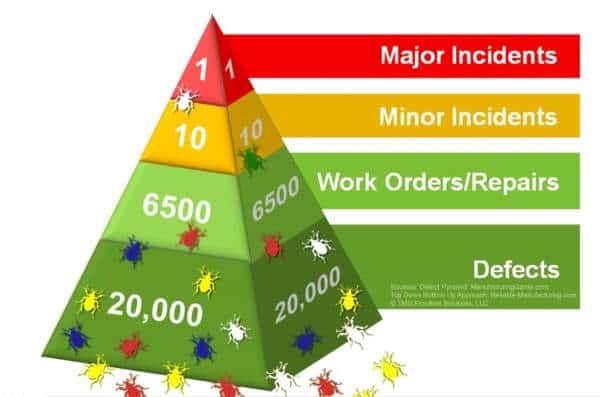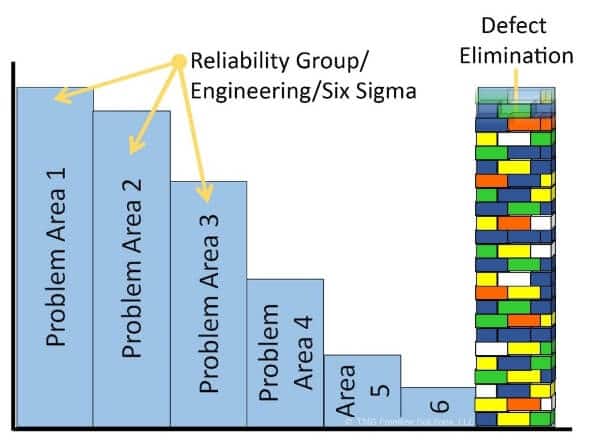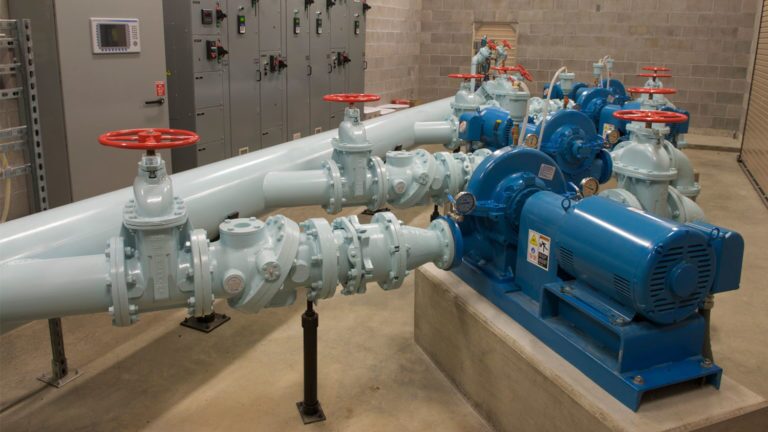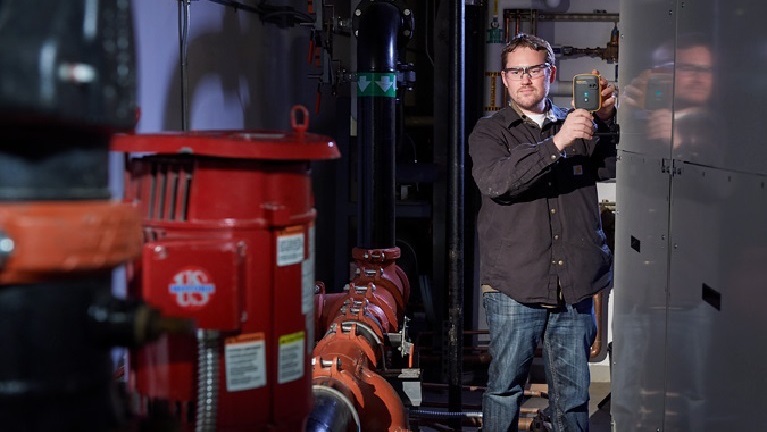Defect elimination programs change the culture by solving lots of little problems first
A defect elimination program targets the smallest, most irritating problems in a plant. It does so by giving everyone a stake in improving daily work life by eliminating errors and faults. In the process, a stronger continuous improvement culture takes hold, creating more widespread support for reliability initiatives at every scale.
Michelle Ledet Henley, president of TMG Frontline Solutions, documents how this process works in her March 2021 webinar for Fluke Reliability, “How a defect elimination program works and why it could work for you.”
“Using a defect elimination process can win over the hearts and minds of those closest to the equipment,” Henley says. “Getting them enthusiastically onboard gives you not only a greater chance of success but also of sustaining it.”
What do we mean by “defect”?
Henley defines a defect as anything that erodes value, reduces production, compromises health safety or environmental performance, and/or creates waste. Here are the most common sources of defects:
- Raw materials: This includes any raw material within the organization that can hurt equipment reliability, such as the sand and water that comes in with crude oil or mineral scale problems in the water.
- Operational discipline: These are defects caused in machines because of how we run them. It includes normal wear and tear and excessive use such as cavitating a pump, running equipment too fast, or improper startup.
- Workmanship: These defects come from how mechanics maintain and repair equipment, such as not sufficiently aligning pumps, using the wrong tool, or improperly tightening belts.
- Quality materials: This includes any issues with spare parts, from the initial quality and fit for purpose to how they are transported, stored, or made available.
- Design: Consider this as situations where machine design, installation, or supporting processes don’t meet the current business need. Common examples include assets operated differently than intended and equipment too hard to access to be successfully maintained.
Both operational discipline and quality defects can be due to unsuitable skill levels, insufficient training, missing procedures, processes too difficult to follow, or a culture that prioritizes speed of repair over quality.
Henley offers this advice: “What matters with craftsmanship is that it’s used regularly. It’s not what they know how to do, but what they actually do most of the time.” While it’s typically up to maintenance teams to get the defects out, they aren’t the only ones putting them in, she notes.
Scope of work: The defects to target
Knowing what kind of defects to look for is one part of the equation. A more significant task is re-training the eye to identify minor issues that a small team can address in a relatively short time.
For a defect elimination culture to take hold, team members need to experience steady progress and feel their effort is achievable and appreciated. Most facilities already have processes and objectives to identify and manage “showstopper” defects on the largest and most critical systems and equipment. As Figures 1a and 1b illustrate, a defect elimination program takes the opposite approach.
“For every one major incident, there are thousands of small defects, such as failures of redundant equipment, nuisance alarms, and short stoppages,” Henley says. “Reliability budgets are usually focused on preventing the big showstopper events, but that ignores the impact of the minor defects on the people who have to deal with them.”
Figure 1a uses a pyramid perspective to compare the major incidents to the defects. Instead of only prioritizing the major problems, Henley’s coaching adds a supplemental bottom-up defect elimination approach that involves a more significant percentage of your workforce in the reliability process.

Figure 1a. While plant reliability experts must prioritize their efforts around the top of the pyramid — the most critical defects threatening plant operations — the bottom layer of minor flaws represents a sizeable opportunity to involve a different team in a parallel effort to improve productivity.

Figure 1b. The relative impact of large, singular defects compared to multiple smaller defects
Figure 1b helps the team visualize the relative impact of minor defects compared to that of the most significant defects. The effect of small defects on team productivity and job satisfaction adds up to just as big a detraction. Yet small deficiencies can be addressed one by one, as the bricks in the defect elimination column suggest.
Addressing defects
Eliminating a defect requires getting to the root cause: finding the defect’s source and preventing it from occurring again. Performing maintenance that solves the problem temporarily, only to have it happen again, is defect removal, not defect elimination.
“Improving reliability involves more than having the tools and techniques,” says Henley, “you actually have to use them on a regular basis and get them to the front-line workers at the equipment. This is where I have seen the majority of efforts fail.”
Here’s Henley’s eight-step process for defect elimination:
- Find a defect
Encourage teams to tackle the most irritating defects. Solving these will be so satisfying that the team will be motivated to resolve more defects. - Verify that it fits boundaries
Set limits on the defect elimination project, such as budget or length of time, to help teams narrow the scope of what’s applicable and achievable. - Assemble a functional team
Teams should include three to six cross-functional members, including people who can both fix the problem and prevent new defects from entering the system. - Look for defect sources
Refer back to the list of sources. - Eliminate the defect
For the most satisfying and sustainable program, the team members themselves should be the ones to implement the solution and not hand it off. - Document the improvement
Use an easy to create and share format with plenty of pictures to help communicate the accomplishment. - Track the savings
Determine a means to measure the improvement as justification for continuing the effort. But make sure the work involved doesn’t exceed the scope of the defect. - Tell the stories
Creating a story around each success will increase the program’s staying power. Henley suggests going beyond facts and figures and highlighting the aspects that made the project interesting. She also suggests using people’s names to credit them and ensure the stories are believable.
“You’re going to need to get the majority of the organization, especially those closest to the equipment, to be enthusiastically on board,” she says, “to the point where they are self-motivated to find and address defects without it being driven top-down.”
To illustrate this, Henley polled the webinar audience on their top challenges around implementing reliability improvements. Slightly more than 31% listed a lack of management support or funding as their biggest hurdle, and 28% said they were too busy with reactive work. “Defect elimination doesn’t solve these problems so much as work around them,” she says.
Look for ways to make work go away
In Henley’s experience, the key is changing the culture — from one that tolerates defects and waits for things to fail to one that’s actively looking for ways to make defects and the associated work go away. “Organizational culture is made up of the stories that we tell ourselves about ourselves,” she says.
“There are a ton of reactive hero stories that are naturally gripping and easy to retell. To change the culture, we have to purposefully seek out proactive heroes and tell their story, about what they did that made a difference, because stories stick.”
For defect elimination case studies and examples of common pitfalls and how to avoid them, watch the entire webinar on Accelix.com. You can reference additional materials at Henley’s website, www.manufacturinggame.com.
Common pitfalls to defect elimination programs
- Projects are too big and outside the sphere of what the team can control. Small does not equate to unimportant. Encouraging multiple small projects will involve more people in repeated processes that create new reliability habits.
- Taking a suggestion box approach. Henley advises against telling people to “go find defects; we’ll create a list and rank them, and then we’ll find someone to deal with it.” If no one ever does address the defect, she says, then the effort becomes de-motivating.
- Too little structure (too difficult to get going) or too much (system collapses under its own weight, administrative effort is too high).
- Trying to go it alone. Build a team of allies with different skills, including people with leadership skills who take the initiative and bring others along with them.
- Overly focused on the numbers. Avoid making the program about the size of the payback and instead emphasize the potential to create a better day at work.
- Letting pursuit of perfection get in the way of progress. Create a safe environment where the teams can experiment and learn and grow.






